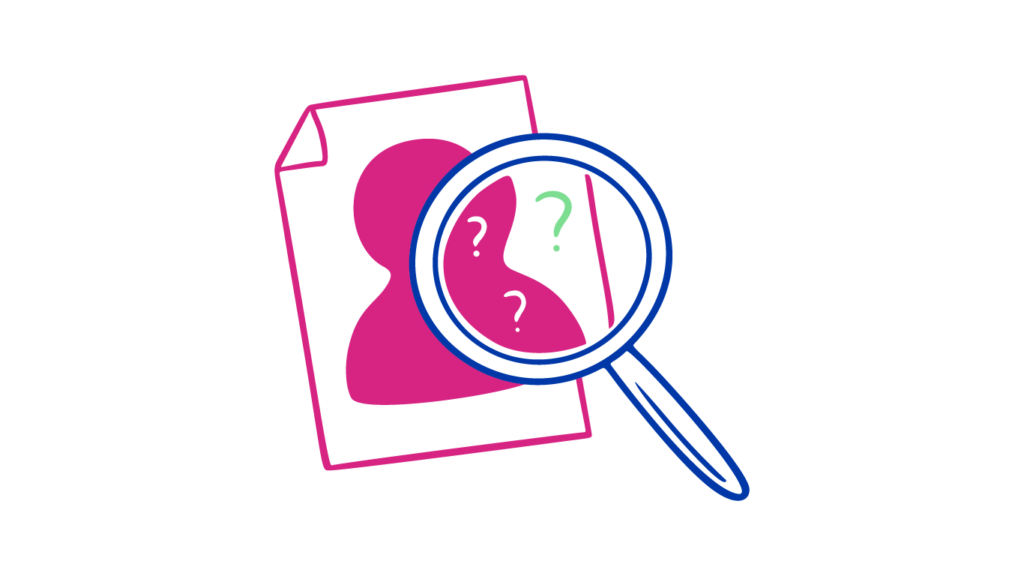The Best Objection-Handling Techniques: A Curated List

Objections in sales are issues or concerns raised by potential customers that are preventing them from buying your product or service. It could be associated with pricing, quality or need, indicating that you have to address more avenues of the buying process.
These objections are a common occurrence in sales, yet they continue to be an area of struggle for many sales reps. Effective objection handling is a vital sales skill that allows you to put a rest to your prospect’s qualms and move forward with the deal.
To learn how to counter your prospect’s concerns the right way, you should have a few key objection-handling techniques up your sleeve.
Objection-handling techniques
By using some of the proven objection-handling methods in your sales meetings, you’re likely to improve the performance of your sales pipeline. Here are the key techniques to help you seal the deal without missing a beat:

1. The boomerang technique
The boomerang method is a classic objection-handling technique that can help sales executives scale their sales. It involves turning the client’s objection around and morphing it into a new opportunity to close the sale. The key is to show them that they should be concerned about a different issue.
Suppose that your prospect objects to your price point by saying, ‘I don’t think we can afford to buy your product right now.’ Using the boomerang technique, you can counter that with, ‘How much would it cost if you don’t deal with [pain point] straightaway?’
By asking this question, you’re turning their concern around to help them reflect on it from a different angle. If the prospect’s pain point is costing their business valuable time and money, they might reflect on whether not signing the deal is worth letting it sit. You’re giving the prospect a reason to act immediately and consider the risks of not buying, thereby turning their concern into an opportunity for you to close the sale.
2. The negative reverse technique
The negative reverse technique is similar to the boomerang method in that you redirect the prospect’s concern back at them. However, this method steers the conversation in a different direction. This technique is a two-parter; it involves a softener statement and a negative statement. Considering the previous price objection example, you can instead respond with, ‘That’s a valid concern [softener]. If you feel like we’re out of your price range, then I guess there’s no point in wasting your time [negative statement].’
This technique should be used with care after you’ve realised that the prospect is indeed not willing to go through with the sale. With this response, you’ll understand the true objection the prospect has — is the price genuinely too high or are they just trying to bargain? In any case, this approach prompts an abrupt response from the prospect.
3. The denial technique
A prospect’s objections aren’t always factual. Your prospect might raise an issue that doesn’t exist in your product. In that case, you can counter the objection using the denial technique. Gently correct their error by showing them how your product addresses their problem in case they have overlooked a key feature. Turn their objection into an opportunity to educate them and get them more invested in your offering.
4. The third-party technique
The third-party technique leverages social proof to take care of your prospect’s reliability objections. For example, they might hesitate to trust you if they have not heard of your company before. You can counter this concern using the third-party approach — present customer testimonials, third-party endorsements and other relevant data to reinforce the notion that your brand and products are reliable.
5. The empathetic approach
Empathy is a powerful tool that can help you establish a genuine connection with your prospect and show them that you’re not just another vendor. Whether the prospect raises an objection directly or morphs it into a question, the best course of action is to express empathy. For example, you might hear the objection, ‘The price doesn’t agree with our set budget to solve this issue.’ Using the empathetic approach, you can respond with, ‘I get that you would want the best value for your money.’ This simple statement shows that you have listened to what they have to say and that it is a valid concern to bring up.
Continue with some open-ended questions to get to the root concern. It could be that they were presented with a better deal by a competitor or that you need to highlight more features so they can see the value for money. Carefully listen to their point of view and counter accordingly. Empathy can go a long way in a business relationship.
6. The feel, felt, found technique
The 3 Fs method revolves around understanding your prospect and making them feel heard. For example, a client might object that they don’t see the value in your offering. The method breaks down your response into three parts. In the first part, you express to your prospect that you understand how they feel. In the second, you validate their concerns by mentioning that you’ve had clients who felt the same way. The last part is where you provide a solution or an alternative to help ease their concerns:
‘We found that after implementing our product, our clients were able to see the value in it.’
7. The Socratic method
The Geek philosopher Socrates presented the idea of using simple questions to better understand the other person’s perspective in case of a disagreement. In the world of sales, this translates to asking open-ended questions to better understand different types of objections, probe assumptions and get to the root of the problem. Here’s an example response to a lack of value objection using the Socratic method:
‘If I understand correctly, you don’t think our product has what it takes to help you resolve your problem?’ Ask follow-up questions to make the prospect rethink their objection and open up to you.
8. The isolate and overcome technique
The isolate and overcome method is designed to help sales executives determine whether the prospect’s concern is genuine. The technique involves isolating the concern, asking them to clarify what they mean and overcoming it accordingly. For example, if your prospect objects to the timing, you can counter with, ‘If timing weren’t an issue, would you invest in our product?’
If they say no then their initial concern is false and you need to find out what is actually holding them back from making a deal. If they say yes then ask them to clarify what they mean and then offer a viable solution.
Objection handling tips
The objection handling process isn’t always seamless. You have to consider multiple factors, including the prospect’s mindset, competitor bias and cultural differences. Here are a few tips to keep in mind to ensure that you carry out objection handling effectively:
1. Acknowledge objections
Acknowledging your prospect’s feelings and concerns is the first and most important step to handling objections. Active listening can help you understand and validate their worries to make them feel heard. Using phrases like, ‘I understand that you feel that way’ or ‘I get where you’re coming from,’ can help you build a better connection with your prospect.

2. Ask probing questions
Ask probing questions to help you gain information from your prospect about their situation. For example, asking ‘What do you intend to achieve from our product?’ can help you learn about the prospect’s primary concerns and wants.
Building trust is key to overcoming objections effectively. Corroborate your statements with social proof, including relevant statistics, customer testimonials and client history.
4. Address objections with a story
Using the power of storytelling is an effective way to help your prospect see how your product can solve their problem. Tell them about a previous interaction where a client raised similar concerns and how you eventually helped them see the benefits of your offering.
5. Offer alternatives
Instead of trying hard to convince your prospect, try offering alternative solutions to overcome their objection. For example, if they have reliability concerns, offer a test run or a brief training session to help them see what your product offers.
6. Empathise with the customer
Showing empathy is key to achieving consistency in your sales performance. Make sure that you and your prospect are on the same page about a particular concern. Even if you’re unable to understand their issue, try saying, ‘I really want to help you but I’ll need more information’ to express your eagerness to help them.
7. Role-play objection scenarios
Practice makes perfect — even if you have gone through all the basics of objection handling, you’ll truly understand it in action. Role-playing sales scenarios with your colleagues can help you monitor your performance, anticipate common objections and prepare counters.
8. Use humour to defuse tension
Lighthearted humour in sales is always a good recipe for strengthening a relationship. Showcase your personality by using jokes at the start of the conversation or during your sales pitch. Avoid using humour during key parts of the meeting, such as describing important product features.
Mistakes to avoid
Here are some common mistakes to avoid when you’re faced with a sales objection:
| Common Sales Mistakes | Explanation |
| Becoming defensive | Don’t react immediately. Becoming defensive will put your prospect in defence mode as well, further limiting your opportunity to close. |
| Interrupting the customer | Give your prospect a chance to finish speaking. Talking over them makes them feel you’re not interested in hearing their concerns. |
| Talking too much | Your prospect should be doing more of the talking. Your goal is to listen and get the information needed to deliver a tailored pitch. |
| Dismissing the objection | Rejecting the client’s concerns is disrespectful as it conveys that you’re not there to help them; you just want the sale. |
| Not understanding cultural differences | Cultural differences can affect your ability to counter objections effectively. For example, some cultures prefer direct communication and want you to stay formal and composed throughout the meeting. |
FAQs
What if a customer raises an objection I haven’t prepared for?
It’s common for customers to raise objections that you haven’t prepared for. In this case, it’s important to stay calm and listen carefully to the customer’s concerns. Ask clarifying questions to fully understand the objection, and then respond honestly. If you don’t know the answer, don’t try to make something up. Instead, promise to follow up with the customer after you’ve had time to research their concern.
Is it possible to turn objections into opportunities?
Absolutely! When a customer objects, they’re indicating that they’re interested in your product or service, but something is holding them back. By addressing their objection and offering a solution, you can turn their hesitation into enthusiasm.
How can I tell if an objection is genuine or just an excuse?
It can be difficult to tell the difference between a genuine objection and an excuse. The key is to listen carefully to the customer’s tone of voice and the language they use. If they seem genuinely interested in your product or service but have a specific concern, it’s likely a genuine objection. If they’re using vague language or seem disinterested, it may be an excuse. However, it’s important to respond to all objections respectfully and offer solutions that meet the customer’s needs.
Can objection handling be automated?
Some aspects of objection handling can be automated, such as providing pre-written responses to common objections. However, it’s important to remember that objections are often unique to each customer and require a personalised response. It’s difficult for a computer program to replicate the empathy and understanding required to effectively execute the objection-handling process.
Conclusion
Handling objections in a sales meeting is a necessary skill needed to pull off a successful close. Mastering these proven objection-handling techniques can help you significantly improve your overall sales performance and accelerate your sales pipeline.
For access to the latest company information and ensure that you are talking to the right people to close the deal, use fullinfo. Our up-to-date data means you get straight to the decision makers, saving you time and wasted effort. Get started today.
References & Further Reading
- How to Dramatically Improve Your Sales Pipeline + Examples
- Seven Proactive Sales Techniques to Scale Your Sales Now
- What You Need To Achieve Consistency In Sales Performance
- How To Use The Feel Felt Found Method To Handle Objections Like A Pro
- Be funny. Make more money.
- [Ultimate Guide] How To Monitor The Performance Of Sales Staff
- The 9 Sales Pipeline Management Tips Every Manager Should Know